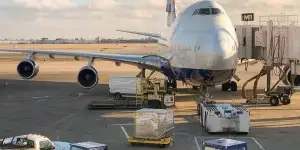When importing goods, knowing the total cost is vital for your business. We call this total cost, i.e., the landed cost. It includes the purchase price and all extra fees to get the product to your warehouse.
This article explains what landed cost is. It explains why it is essential and how to calculate it well. Read along!
Table of Contents
What is landed cost?
What makes up the landed cost?
How do you calculate it?
What is landed cost?
Landed cost is the total price for shipping goods from your supplier to your doorstep. It encompasses all the costs of moving your products until they reach you, including insurance, transportation fees, duties, taxes, and other related expenses.
Why is it important to estimate the landed cost?
Picture this: You’ve purchased products from China using a China sourcing service to find top suppliers. They’re shipped to your home country at a fair price. However, upon arrival, taxes and additional fees stack up, resulting in unexpected costs that eat into your profit margins.
Not factoring in the landed cost leaves you unaware of the total expenses. Understanding these costs accurately is crucial for maintaining profit margins.
In addition, it helps you set competitive prices, manage inventory effectively, make smarter supplier selections, and comply with accounting regulations.
What makes up the landed cost?
To calculate the landed cost accurately, you need to consider several key components:
1) Buying price
It is the initial cost of the product paid to the supplier. Thus, it is the first component for calculating the landed cost.
2) Transit insurance costs
These costs cover the protection of your goods during transit. It safeguards your investment from risks like damage or loss. Get the right insurance and add its price to your landed cost.
3) Transportation and freight expenses
Shipping goods from your supplier’s warehouse to your destination has costs no matter by air freight, sea freight or express.
4) Taxes and import duties
Your country taxes shipments and products from overseas. It’s good to understand that paying for your product and getting it inside your country is not the end.
The destination country charges customs duties. These affect the total landed costs. It’s advisable to calculate this accurately to avoid any surprises.
5) Processing and handling charges
The handling fees are for loading and unloading. They also cover moving the goods during transit. These fees can vary depending on the difficulty of handling the goods.
6) Foreign exchange rate impacts
When you work with an international freight forwarder and supplier, exchange rates can change costs. Fluctuations in exchange rates may cause the total landing costs to either go up or down.
7) Surcharges and miscellaneous costs
These can include costs such as bank charges for international transactions. They can also include documentation fees and other random expenses from importing.
Real-life example: How do you calculate landed cost?
Let’s do a few practical calculations. They will show how to calculate the landed cost.
A standard formula for landed cost is:
Landed Cost = Product Price + Inland Transportation + Export Packing + Insurance + Duties & Taxes + Bank Charges + Port Handling Charges
Suppose you break down the costs of importing 500 coffee makers:
Product price: $30 per coffee maker (total $15,000)
Inland transportation: $300
Total ocean freight rates: $2,000
Insurance charges amount to 2% of the total value: $346 (calculated based on $15,000 + $2,000 + $300)
Duties & taxes assume 12% on CIF value: $2,071.20 (calculated on $15,000 + $2,000 + $346)
Bank charges: $75
Port handling charges (origin & destination): $400 (assumed $200 each)
Step 1: Calculate cost of goods landed (CIF)
First, calculate the CIF (Cost, Insurance, and Freight):
CIF = Total goods price + inland transportation + ocean freight + insurance
CIF = $15,000 + $300 + $2,000 + $346 = $17,646
Step 2: Calculate landed cost
Add duties, taxes, bank charges, and port handling charges to the CIF value:
Landed Cost, which is: CIF + Duties & Taxes + Bank Charges + Port Handling Charges
Landed Cost becomes $17,646 + $2,071.20 + $75 + $400 = $20,192.20
Thus, the landed cost per coffee maker is:
$20,192.20 (total landed cost) ÷ 500 coffee makers = $40.38 per coffee maker
Final thoughts
Understanding and calculating the landed cost correctly is a skill. It gives an advantage to any importer. It ensures you have a complete picture of all fees. As a result, you can set fair prices and make smart business choices.
Source from Airsupply
Disclaimer: The information set forth above is provided by airsupplycn.com independently of Alibaba.com. Alibaba.com makes no representation and warranties as to the quality and reliability of the seller and products.



